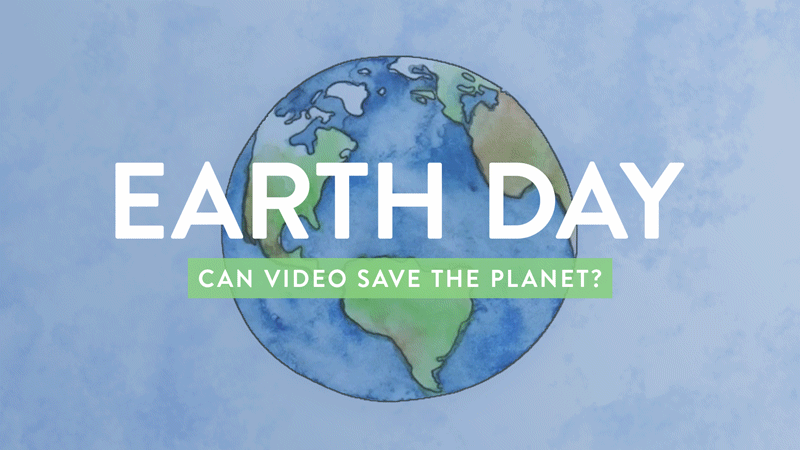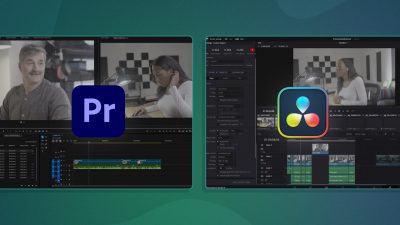This Earth Day, we’re worried about our planet. It seems as though every year brings news of yet another environmental catastrophe, whether it’s an oil spill, rapidly declining populations of pollinators and frogs, or increasingly extreme weather events brought on by climate change.
Yet, there are signs of hope. More people are conscious of their impact on the environment, and making changes for the better. A large part of why many are finding new motivation to help the environment is video.
Video shines a light on the far-flung reaches of the world, where many people would never travel on their own. It creates a connection with the plight of animals under environmental distress due to habit loss or other factors. And, as a result, it inspires action in a way that few other sources of information can achieve. Keep reading for our thoughts on why video just might save the planet, and steps you can take to help.
Awareness
The first step to solving any problem is awareness that the problem exists in the first place. Video has played a crucial role in highlighting environmental issues that otherwise would not get the attention they deserve.
For example, the Deepwater Horizon oil spill of 2010 was said to be on a scale greater than any other spill in history. But what does that really mean? How would you know how bad it really was if you weren’t there to see it?
There was dramatic video of the disaster unfolding at the surface, but there was also a livestream of thousands of gallons of oil gushing underwater that went on for months. That video feed made sure the catastrophe remained in the public consciousness until its eventual resolution. Footage from the disaster is still used from time to time when offshore drilling is in the news.
It’s easy to see how a serious problem bubbling under the surface could escape public notice. Video played a key role in pressuring officials and BP to solve the oil leak.
Our Planet
More recently, Our Planet, a Netflix special featuring the venerable David Attenborough, was released. A notable theme running through all the beautiful and remarkable footage was human impact on the environment. Hear from Mr. Attenborough why it was important to approach this series differently than past documentaries:
”Nature once determined how we survive. Now we determine how nature survives.” – Sir David Attenborough @OurPlanet @Netflix #ShareOurPlanet #OurPlanet pic.twitter.com/vJw5POVAf2
— World Wildlife Fund (@World_Wildlife) April 12, 2019
As animals face shrinking habitats and the consequences of a rapidly changing climate, they’re often driven into desperate and unusual circumstances. In painful, occasionally controversial moments, this series forced viewers to confront the sad reality many species experience on Earth.
Importantly, as more people viewed Our Planet and reacted to it, the conversation quickly moved to the mainstream. A simple news article about the shrinking habitats of walruses would not have been able to achieve the same reach.
Connection
By giving audiences a front row seat to the perils of environmental destruction, video allows viewers to forge a connection with places, animals, and causes they otherwise would not. The key is the emotions video can trigger for viewers.
For example, many expressed dismay and sadness over scenes in Our Planet on social media:
Me watching a baby flamingo with salt encrusted legs get LEFT BEHIND on #OurPlanet: pic.twitter.com/kaXcFxYMRE
— Taylor Armitage (@taylor_armitage) April 13, 2019
This series cut straight to the heartstrings in many scenes, as other documentaries have done before. As it turns out, emotions play a key role in forming memories. This means audiences are more likely to remember details from provocative documentaries like Our Planet. Keeping environmental issues top of mind for consumers is key to changing their behavior.
Action
By forging an emotional connection with viewers, Our Planet stands a better chance at motivating its audience to take action. There’s even concrete evidence of a so-called “Attenborough Effect.”
David Attenborough is synonymous with powerful, visually stunning nature documentaries. Recently, he’s also been associated with driving environmentally-friendly lifestyle changes amongst consumers.
A study of 3,833 consumers by GlobalWebIndex found the “Attenborough Effect” had led to a 53% drop in single-use plastics over the course of twelve months. Consumers reported greater awareness of the importance of sustainable packaging. They specifically mentioned documentaries like Blue Planet II and Our Planet as impacting their behavior.
This is no accident. Our Planet has a series of videos on its website with additional clips of David Attenborough promoting important environmental initiatives. They are not just hooking viewers with captivating and harrowing imagery, they’re also helping them take action.
So, Can Video Save the Planet?
The truth is, while video can bring greater awareness to environmental issues, and make consumers more likely to change their behavior, no single factor alone can save the Earth. Not even this amazing video from Lil’ Dicky (contains some NSFW language).
We all have to work to change our habits to reduce, reuse, and recycle. More than that, we also have to support organizations that rehabilitate natural habitats and promote environmental welfare at scale.
SproutVideo is a proud sponsor of the National Forest Foundation, a non-profit dedicated to revitalizing forests and planting new trees. This Earth Day, find a cause you care about, and if possible, support a reputable organization that addresses it.
Artwork by Heather Ivins
How are you giving back to the planet this Earth Day? Please share in the comments below!








